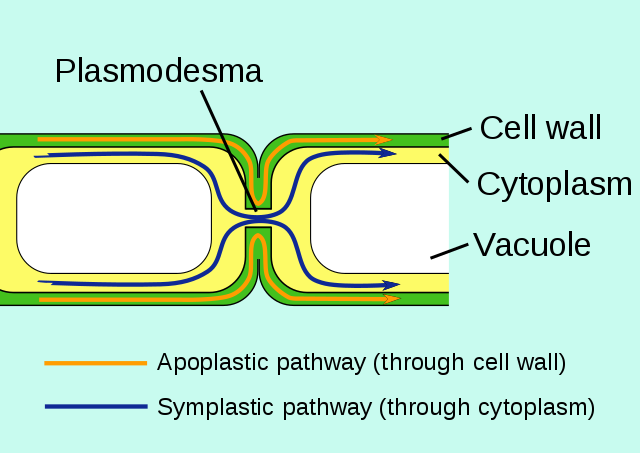Plasmodesma
fine cytoplasmic channel in higher plants that connects the cytoplasm of one cell to that of an adjacent cell From Wikipedia, the free encyclopedia
Remove ads
Plasmodesma (plural is 'plasmodesmata') is a microscopic channel across the cell wall of a plant cell.[2][3] It allows transport and communication between neighbouring cells. Plasmodesmata also evolved independently in some algae.


Unlike animal cells, every plant cell is surrounded by a polysaccharide cell wall. Neighbouring plant cells are therefore separated by a pair of cell walls. Although cell walls are permeable to small soluble molecules, plasmodesmata allow direct, regulated, intercellular transport of substances between cells.[4]
Similar structures connect animal cells.[5][6] Stromules form between plastids in plant cells.[7]
Remove ads
References
Wikiwand - on
Seamless Wikipedia browsing. On steroids.
Remove ads
